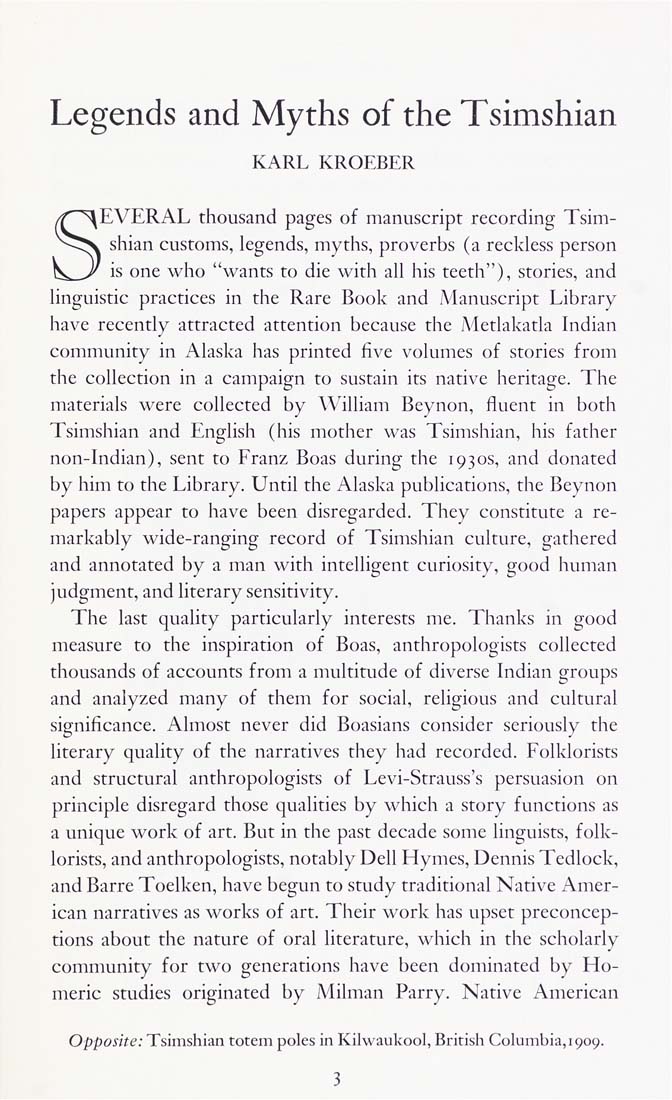Columbia Library columns (v.34(1984Nov-1985May))
(New York : Friends of the Columbia Libraries. )
|
||
|
|
|
|
| v.34,no.3(1985:May): Page 3 |

Legends and Myths of the Tsimshian KARL KROEBER ^EVERAL thousand pages of manuscript recording Tsim¬ shian customs, legends, myths, proverbs (a reckless person is one who "wants to die with all his teeth"), stories, and linguistic practices in the Rare Book and Manuscript Library have recently attracted attention because the Metlakatla Indian community in Alaska has printed five volumes of stories from the collection in a campaign to sustain its native heritage. The materials were collected by AA'illiam Beynon, fluent in both Tsimshian and English (his mother was Tsimshian, his father non-Indian), sent to Franz Boas during the 1930s, and donated by him to the Library. Until the Alaska publications, the Beynon papers appear to have been disregarded. They constitute a re¬ markably wide-ranging record of Tsimshian culture, gathered and annotated by a man with intelligent curiosity, good human judgment, and literary sensitivity. The last quality particularly interests me. Thanks in good measure to the inspiration of Boas, anthropologists collected thousands of accounts from a multitude of diverse Indian groups and analyzed many of them for social, religious and cultural significance. Almost never did Boasians consider seriously the literary quality of the narratives they had recorded. Folklorists and structural anthropologists of Levi-Strauss's persuasion on principle disregard those qualities by which a story functions as a unique work of art. But in the past decade some linguists, folk¬ lorists, and anthropologists, notably Dell Hymes, Dennis Tedlock, and Barre Toelken, have begun to study traditional Native Amer¬ ican narratives as works of art. Their work has upset preconcep¬ tions about the nature of oral literature, which in the scholarly community for two generations have been dominated by Ho¬ meric studies originated by Milman Parry. Native American Opposite: Tsimshian totem poles in Kilwaukool, British Columbia,1909. 3 |
| v.34,no.3(1985:May): Page 3 |







